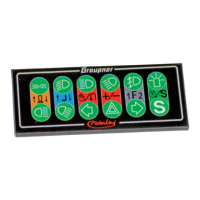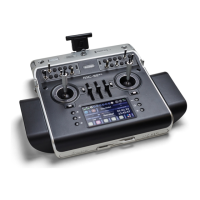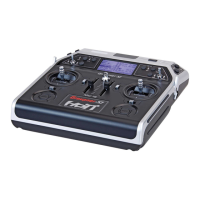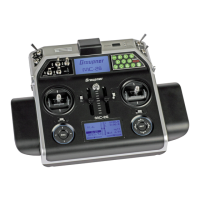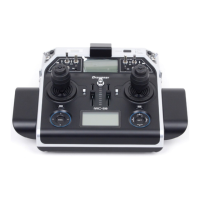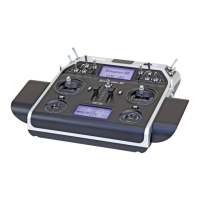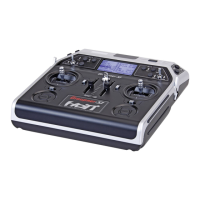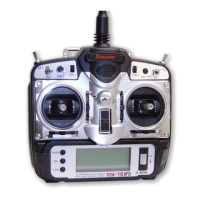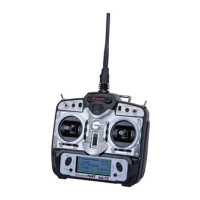291
Programming examples - Winged models
"Model select" (page 73)
…, and use the selection keys of the left or right touch
pad to select a free model memory location.
03
04
05
01
06
R16
free
free
free
free
00:12h
free
02
Right after a tap on the centre SET key of the right
touch pad to confi rm this selection, the type of model
to be programmed will be requested:
Select model type ( free model memory )
Since the objective is to work with a winged model
in this section, the symbol for a winged model is to
be confi rmed with a tap on the centre SET key of
the right touch pad. The display switches back to the
base screen.
Notes:
•
Of course, you can also use the
prede ned default "winged model"
supplied with the receiver as model
memory 01 for the programming of your rst
model.
• Once the "Select model type" option has been
opened, the process can no longer be canceled!
Even if you switch off the transmitter, this selection
must be made! After a selection has been made,
the selected model memory can only be made
“free” again by erasing it subsequently from a
different model memory; see page 74.
• If battery voltage is too low, the model switchover
cannot be made due to reasons of safety. An
appropriate message will appear in the screen:
not possible now
voltage too low
Once this fi rst hurdle has been taken, the binding of
the receiver built into the model to this model memory
can be done in the menu …
»Basic settings, model« (from page 82)
... to bind.
Model name
Stick mode
1
n/a
BASIC SETTINGS, MODEL
Info
n/a
n/a
Module
n/a
HoTT
SEL BD1 BD2 BD3 BD4
Note:
After con rmation of the model selection in
the base screen, if you con rm the message
appearing in the screen for a few seconds …
BIND. N/A
OK
… with a tap on the SET key of the right touch pad,
this line is accessed automatically.
“Binding type”
If your transmitter is equipped with the latest fi rmware
or has since been updated accordingly, you should
briefl y deal yet with the differences between the two
available HoTT synchronization methods before the
actual binding process. Set default “model”:
Stick mode
1
n/a
BASIC SETTINGS, MODEL
Info
n/a
n/a
Module
n/a
HoTT
SEL BD1 BD2 BD3 BD4
Binding type
Model
• “Model” -specifi c bound receivers respond only
to signals of them explicitly allocated memory
model. One, possibly unintentional, operating on
an unallocated model memory is not possible.
• “Global”, ie specifi c sender, receiver bound to re-
spond to the signals of all model memories “their”
station! A “wrong” model memory if necessary to
recognize only the warning of the missing return
channel.
So If necessary, change the line “Binding type” and
change the setting accordingly:
Stick mode
1
n/a
BASIC SETTINGS, MODEL
Info
n/a
n/a
Module
n/a
HoTT
SEL BD1 BD2 BD3 BD4
Binding type
Global
“Module”
In this line the binding process between model mem-
ory and receiver is initiated, as described in detail on
page 88. Otherwise, you cannot address the receiver.
Afterward, use the selection key of the left or right
four-way button to move up to the fi rst line and begin
with the actual model programming in the “Model
name” line:
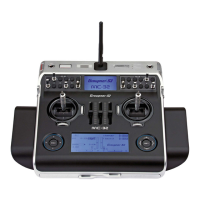
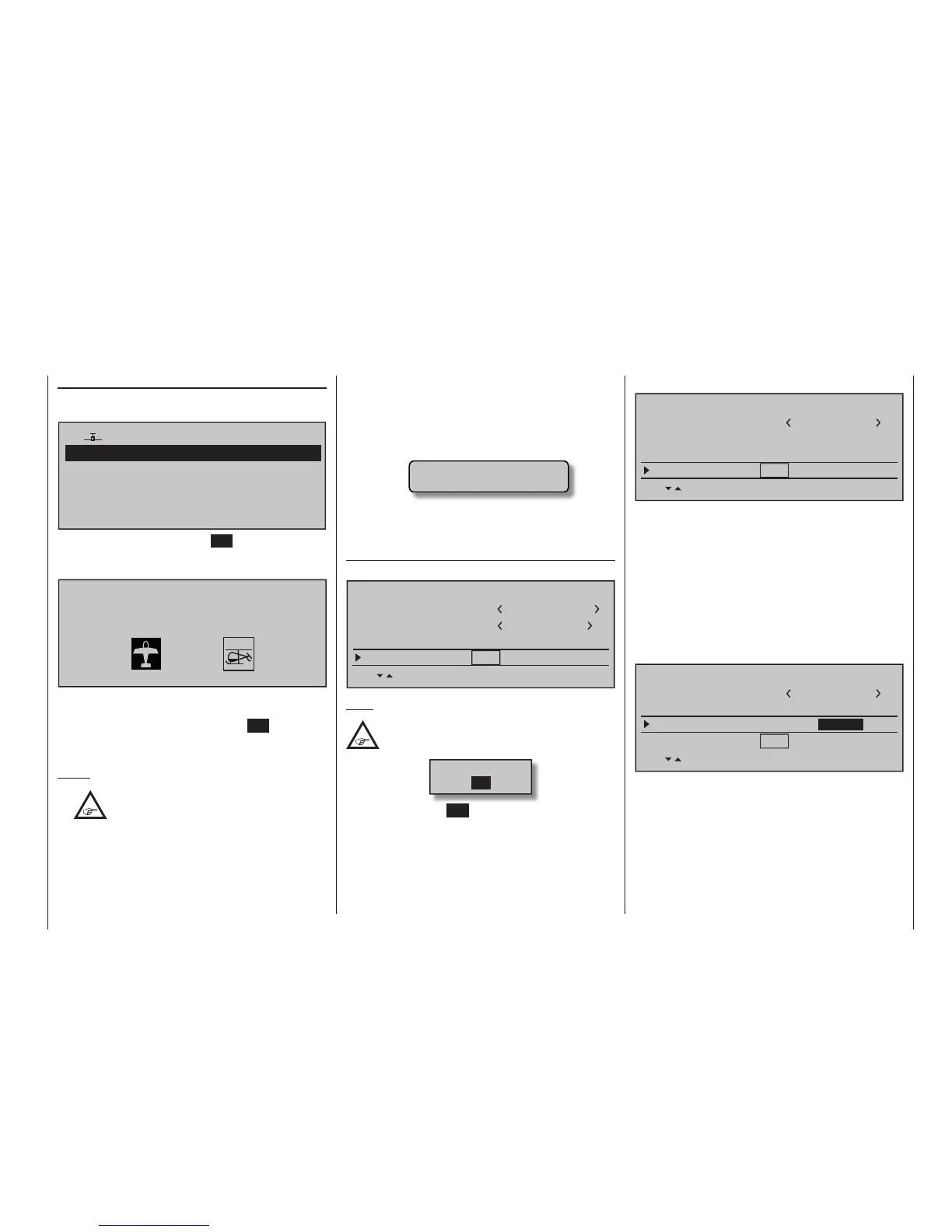